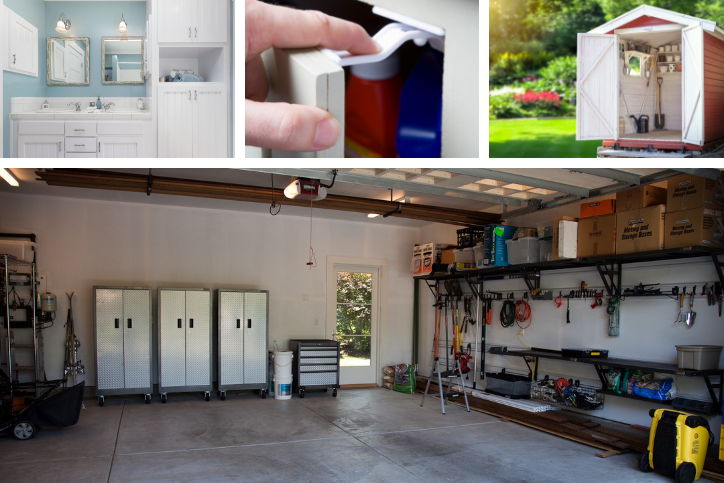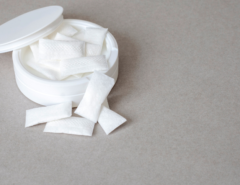Safe storage is one of the best ways to help prevent poisonings and overdoses. But, much like ogres and onions, this seemingly simple idea includes many layers. Let’s explore these layers to help ensure your home is poison safe for your family, visitors, and pets.
Child-resistant Packaging
Let’s start at the top— the child-resistant top. In the 1950s and 60s, hundreds of children died each year after getting into household products and medicines. As a result, efforts were made to educate the public about storing products out of the reach of children. In 1961, President Kennedy declared the third week of March would be observed annually as “Poison Prevention Week”.
But education was not enough, children were still dying.
This led Congress to pass the Poison Prevention Packaging Act of 1970. This law requires medicines and select household products to have child-resistant tops or packaging. To comply with the law, packaging must be significantly difficult for children under five years of age to open within a reasonable time, but not difficult for adults and older adults to use properly. Many people incorrectly refer to these packages and tops as “child-proof.” They are not meant to keep the child out completely; they are intended to slow the child down and not give him or her easy access to the product inside.
The good news: since the introduction of child-resistant packaging, significantly fewer children have died from ingesting household products and medicines.
Cabinet Latches
Much like child-resistant packaging, cabinet latches are meant to slow children down, not keep them out of cabinets entirely. There are a variety of latches available that can easily be installed with basic tools. The best time to install cabinet latches is before a child starts to crawl. Once children are mobile, they become curious about their surroundings. Opening doors and drawers is part of normal development. Try to stay a step ahead of them as they grow and learn. Cabinet latches are effective tools that limit a child’s access to harmful household items.
Up and Away and Out of Sight
The Centers for Disease Control and Prevention (CDC) and several government agencies, national partners, and program partners joined together to create the Up and Away and Out of Sight campaign. The program emphasizes six main points to make sure medicine is stored safely:
- Pick a place your children cannot reach.
- Put medicines up and away after each use.
- Make sure the safety cap is locked.
- Teach your children about medicine safety.
- Tell guests about medicine safety.
- Be prepared in case of an emergency.
Parents are often surprised by the reach of young children. It sometimes seems like their ability to stretch is matched only by a 1970s Stretch Armstrong toy, reaching items that are sitting farther away than the length of their arm. And though it might be convenient, storing medicine on the counter or nightstand between doses will increase the chance a child will get into it. Double check to make sure the safety cap is on properly. Teach children that medicine must be given by you or another safe adult. Provide guests a safe place to keep their medicine while visiting. Purses and suitcases are not safe options, as children will often explore new belongings in their home. Finally, save the poison center number, 1-800-222-1222, as a contact in your mobile phone. Call us as soon as you suspect your child has taken too much medicine or medicine that belongs to someone else.
Storing all medicine up, away, and out of sight keeps young children safe. It also ensures your medicines are safe and secure from older children interested in experimenting, family members or visitors who are drug seeking, and pets.
Garage, Basement, and Backyard Shed
Chemicals, paints, automotive products, pesticides, and herbicides are typically stored in these areas. Store all of these items in a locked cabinet. Keep these products in their original labeled containers and never in food or beverage containers. Poison centers have managed many cases about someone getting hurt after drinking a chemical that was stored in a beverage bottle.
Items in Plain Sight
The above information is great for medicine and cleaning products, but what about personal care and household products sitting out in plain sight? Items like soap, air freshener, shampoo, deodorant, lotions, plants, and arts and crafts supplies — just to name a few. The answer: proper supervision. Check on young children often when they are quietly playing.
Know the names of your indoor plants. Use our plant list to see if they are safe to have in the home with children or pets. Remember not everything on the poisonous list will need to be discarded. You can call the poison center to ask for more information. Check often to make sure leaves or flowers have not fallen on the floor.
Toys should be age appropriate. Toys with magnets and small batteries should not be available to young children who are still putting everything they find in their mouth. Talk with older children about keeping these types of toys in a safe place where younger siblings cannot get ahold of them.
Congratulations! You now know about each of the many layers of safe storage. Following the tips provided here will help your family remain poison safe. But if the unthinkable happens, and you discover someone has taken too much medicine or has swallowed a cleaner or personal care product, help from experts is just a phone call away at 1-800-222-1222 any time, day or night.





Leave a Reply